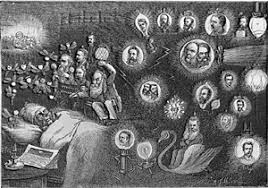Electric City - how it came about
- Martin Ashburn
- Feb 7, 2020
- 4 min read
Updated: May 26, 2021
This article is about how we came up with an idea for an escape room and developed the story for our latest room Electric City opened in late November 2019. It is an unusual name and comes from a teaching colleague from Uganda in the 1980's. In his science lessons Sef Khan always pronounced electricity as electric city which I found funny and have remembered all these years on.
In the summer of 2018 I had finished building our Witch room. As with all new rooms there is a bedding in period when we observe carefully how customers interact with puzzles when playing the game. Getting feedback at the end is vital and allows us to make the necessary tweaks to optimize the player experience. These might be adjustments to ‘signpost‘ the next challenge or something to make the task in hand more explicit. By the end of September after the stress test of 250 university freshers playing throughout the week, the game was running smoothly and getting great reviews.
We still had space to build at least one more escape room, the question was what sort of escape room. As I described in an earlier blog, I like to build the rooms around a strong narrative, and we try to use story lines inspired by the city’s heritage. The Plague and Witch rooms are based heavily on the events that happened in the graveyard of St. Andrew’s church but what events would inspire our next room?
To be honest inspiration didn't come quickly and when it did - I really wasn't expecting it. I saw The Current War at the cinema. The film revolves around the rivalry in the late 19th century between the American scientists Thomas Edison and Nikolai Tesla and the battle for supremacy between Direct and Alternating current.
Being from the North East, I am aware of the great engineers from our region - George Stephenson, William Armstrong, and Charles Parsons to name a few. But in my research one name in particular kept appearing alongside the American Edison and that was Joseph Swan. I learned of an intense rivalry between these two great inventors as they raced to invent the first working electric light. There were claims of patent infringements and attempts to sue in both the United Kingdom and America. A good account of the events can be read in the American History article Lighting a Revolution

Joseph Swan was born in Sunderland but lived and worked on Tyneside.
Incredibly Newcastle upon Tyne was the first city in the world to be lit by electricity when Joseph Swan’s bulbs illuminated Mosely Street. It really was the original electric city! Swan had earlier demonstrated the working light bulb at The Literary and Philosophical Society in Newcastle and this amazing working library was where I was able to find out more.
I FELT THIS STORY COULD SOMEHOW FORM THE BASIS OF OUR NEXT ESCAPE ROOM ...
But, the challenge was to develop the narrative with a clear objective - what would the players need to do to complete the game and what would create that a sense of urgency that makes players race against the clock.
I had seen some cartoons in books I’d borrowed from The Lit and Phil. One depicted a fictitious scene of the electrocution of bystanders and a horse and cart from an electric streetlamp. The other was the nightmare of a gas manufacturer which portrayed the fear of traditional manufacturers to the ideas of Swan, Edison and others. It appeared that at the time the invention of the electric light was met with fear and suspicion from various sources.
I began to develop the idea of an opposition movement to Swan’s work from the medical establishment, the gas and oil industries and a general tension between science and religion during that period. Exaggerating the level of opposition allowed us to create a story line with the required level of intensity to make customers play with a sense of urgency. Perhaps workers in the gas industry were being told their jobs were under threat. There would be demonstrations and protest marches. Maybe the proposed presentation at the Lit and Phil would be trigger for an angry group of to march on Swan’s offices intent on stopping the demonstration of the light bulb. Could the players save Swan’s work before the mob arrive to destroy it? The story made sense in terms of an escape game and as staff, we honed and refined the narrative so that it would be clear to the players.
As in our other escape rooms the narrative and objective would be presented through a short film. We were kindly given permission to film inside the Lit and Phil itself which adds a great level of authenticity to the narrative.
I like players to learn something about the city of Newcastle and this time I wanted this to be revealed within the game rather than in the introduction. We used series of old style telegraph messages about the mob's progress through the city. which as well as giving a set of directions for a later puzzle gave interesting facts about parts of the city.
My article on the use of media in building immersive escape rooms has examples of soundscapes from Plague and Witch. The final minute of Electric City sees the mob arrive at Swan's offices as the players frantically try to get the light bulb working. Customer feedback is that this adds an extra layer of stress to the experience.
So that was how Electric City evolved, next was the simple matter of building the thing!






Comments